No danger for house tigers - here you can find out which ten indoor plants are non-toxic and therefore perfect for cats.
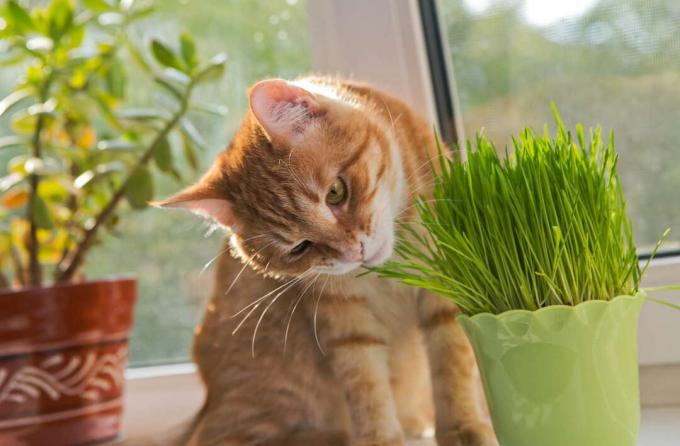
Climbing, romping, playing - especially young cats are extremely curious and want to explore everything. It can also happen that the houseplant is affected. But not every plant is also suitable for our house tiger - in fact, there are many classics among them Houseplants poisonous to cats. Nevertheless, as a cat owner you don't have to do without your beloved plants, because fortunately there are also a number of them that are absolutely harmless. Here you can find out which ten plants are best suited for a household with a cat.
"Contents"
- 1. basket marante
- 2. indoor fir
- 3. Cyprus grass
- 4. slipper flower
- 5. Canary date palm
- 6. tapir flower
- 7. slanting plate
- 8. money tree
- 9. hibiscus
- 10. catnip
1. basket marante
With their patterned, variegated leaves, they are basket marants (calathea
) really extraordinarily beautiful. With almost 300 species, the selection of different patterns is huge and really tempts you to collect. The care of the Korbmarante is a bit more complex: the plant does not like direct sunlight, waterlogging or drought and should be sprayed with water regularly. For cats and humans, however, the Korbmarante is the ideal houseplant - all its species are non-toxic and can be set up without hesitation.
2. indoor fir
While the Christmas tree only decorates our apartment in December, the indoor fir (Araucaria heterophylla) all year round a welcome guest. Visually, it resembles the fir, but has much finer and lighter needles. But unlike other conifers, it can easily be kept as a houseplant. With good care, the indoor fir can even grow up to two meters high. However, it is important that the indoor fir is as cool as possible, but still bright - unfortunately, it does not like temperatures above 15 °C. But if you can offer it such a place, the indoor fir will bring joy for a long time, because it is also harmless to cats.

3. Cyprus grass
Cyprus grass (Cyprus zumula) is probably known to most cat owners under a different name, because the plant is often also referred to as cat grass. In fact, the plant is a real blessing for the little four-legged friends. It contains valuable ingredients and stimulates digestion - so nibbling is allowed. Cats that are offered Cyprus grass often leave the other indoor plants alone and only help themselves to the cat grass. But the Cyprus grass is also a great houseplant in other respects: it is not only easy to care for, but also visually not to be despised.
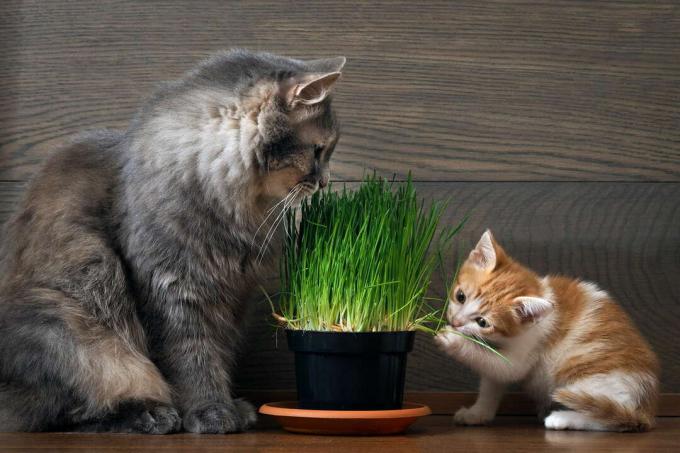
4. slipper flower
The slipper flower (Calceolaria) is a real eye-catcher on the windowsill and balcony in spring. In particular, the bright, bloated flowers in yellow, orange and red (often also with a pattern) make them a real eye-catcher. The slipper flower also owes its unusual name to these blossoms: if you take a closer look, the shape of the blossoms is actually reminiscent of a slipper. Fortunately, the plant is not only beautiful, but also non-toxic, so cats can play with it without hesitation.

5. Canary date palm
The Canary Date Palm (Phoenix canariensis) ensures a tropical atmosphere in every apartment - with its large fronds, the plant is definitely a real eye-catcher. Nevertheless, the exotic is not demanding in terms of care - a sunny location and regular watering are often enough for the date palm to thrive magnificently. With good care, the palm trees can grow up to two meters high and are therefore not suitable for every apartment. For cats, however, the date palm is absolutely unproblematic because it is not poisonous.

6. tapir flower
In Germany it is still a rarity, while the tapir flower (Crossandra infundibuliformis) a real beauty: With its salmon pink or orange flowers and dark green leaves, the tapir flower, also known as Krossandra, attracts everyone's attention. The plant doesn't need much to bloom so splendidly: a bright location, temperatures above 18 °C and regular watering are completely sufficient for the plant. But not only their appearance makes the tapir flower so attractive for cat owners - it is also non-toxic and therefore perfectly suitable for house tigers.
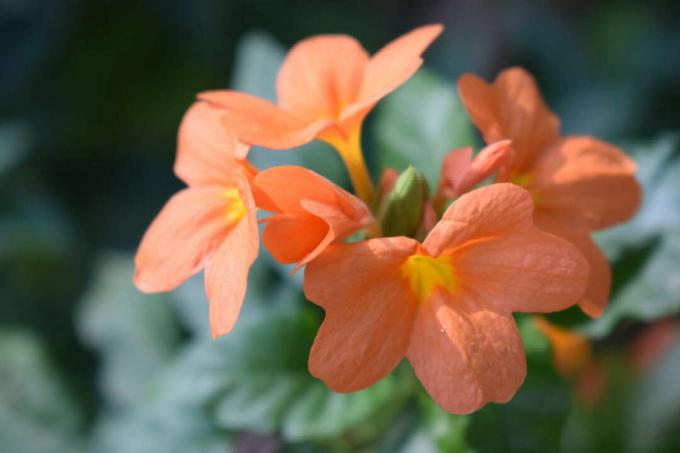
7. slanting plate
Who the slanting plate (Achimenes longiflora) sees it for the first time, immediately recognizes where the plant got its name from: the large flower plates, which the plant has, are quite oblique on the long flower tubes. But that, coupled with the bright colors of the plant, gives the slanted plate its very own charm. The plant is good for cats because it is absolutely non-toxic. But it has another advantage: it can also be wonderfully used as a hanging plant plant in a traffic light. When hung in the right place, it is out of reach for cats and won't be nibbled on.
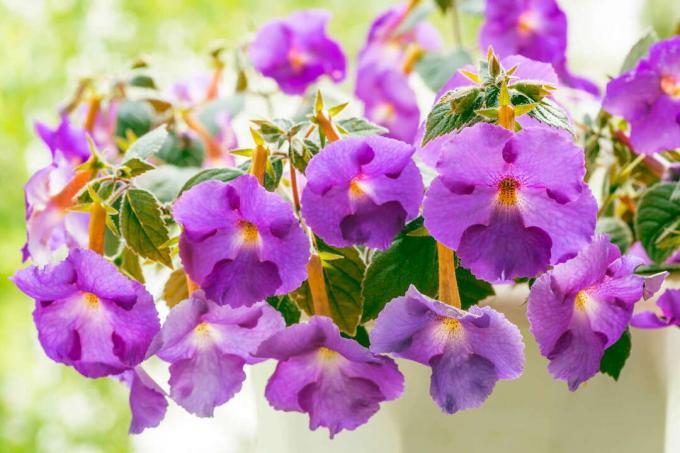
8. money tree
You get rich with a money tree (Crassula ovata) unfortunately not, but it definitely enriches the apartment. With its fleshy leaves, it is a popular houseplant that shines above all with its robustness: the money tree is one of the hard-to-kill plants and can effortlessly last for generations. The money tree is also a popular gift, as it is considered a lucky charm and a symbol of prosperity. It is also a real lucky charm for cats, because it is non-toxic and can therefore remain in the home without any problems.
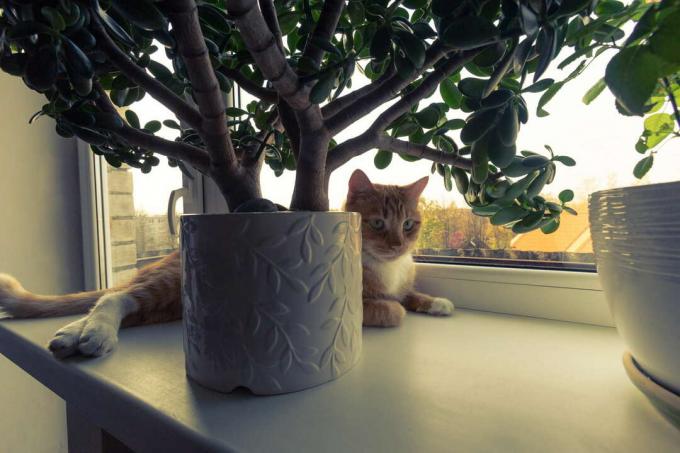
9. hibiscus
the hibiscus (Hibiscus) is best known for its beauty. With its large, brightly colored flowers and dark foliage, it really is one of the most impressive indoor plants ever. But despite its exotic origin, the hibiscus is considered robust and does not need a lot of care. No wonder, then, that it is still one of the most popular indoor plants. Even cat lovers can keep the beautiful flower with a clear conscience, because fortunately it is non-toxic.

10. catnip
The name says it all: With its strong, minty smell, catnip (Nepeta catarina) a real magnet for house tigers. The reason for this is the nepetalactone contained in the plant, which has an attractive effect. Most cats respond almost euphorically to catnip—playing with it, dancing around it, and even rolling around in it. If the catnip is eaten, it often has a calming effect on the house tiger. Despite the apparently intoxicating effect, cat owners need not fear that the plant is dangerous - it is completely non-toxic. In fact, catnip can even be very helpful: If you put some of it in the transport box, many cats will go in voluntarily and are also much more relaxed during the journey.

In our article you can find out which ten indoor plants can be dangerous for your animals because they are poisonous poisonous houseplants for pets.
tip: If you want to keep strong and healthy indoor plants, you should fertilize them regularly. Pet owners in particular should pay attention to organic fertilizers with harmless ingredients. Our Plantura is perfect for all animal lovers Organic room and green plant fertilizer, which is simply applied over the irrigation water.



